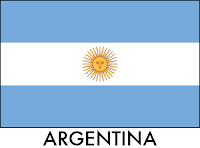
Most parts of the lamb are tasty, but often seriously overpriced. When I saw a single rack of lamb going for $40 (not organic, not free range), I couldn't believe it. It's possible to get great deals on lamb at Costco or at middle Eastern butcher shops, but sometimes specials show up at the regular grocery store. Shanks are delicious, and most people will pass right by them in favor of a perfectly triangular loin chop. Recently I've been digging these shoulder chops, which work either as steaks or as the main ingredient in a savory stew. Vacuum sealed and about $4 a piece, they are a great way to satisfy that occasional wolfish craving for tasty little lamb.
I decided to improvise a bit and add beets this time. While it simmered away, I wondered if anyone else had the idea, and discovered that I had independently recreated
hamad, an Iraqi Jewish recipe prepared for Rosh Hashanah. Nothing new under the sun, folks. Alas, my recipe here isn't kosher (but it's close) and it's Passover right now, which demands a whole different set of rules. But because lots of people of all faiths are eating lamb this weekend, I figured I'd go ahead and share it. (If you're interested in some other obscure Jewish cooking, check out
this article on Libyan-Jewish cuisine as it's served in Rome.)

The top photo shows about 1.5 lbs. of lamb shoulder, three beets, two parsnips, a small onion, half a pound of sliced mushrooms, a can of diced tomatoes, and some chicken broth. I've also used wine and beer with great results, but it's not absolutely necessary. (If you're looking for a good kosher beer, there's lots of options out there that might surprise you, but why not go with
He'Brew: The Chosen Beer?) Peel and dice your root vegetables, being sure to strip out the woody core of the parsnips. Brown the lamb shoulder, remove, and then brown the onions in the rendered fat. Add in the parsnips and beets and allow to cook for a bit.

Return the lamb to the pot. If you want, you can add everything at once, but I like to layer my liquids. Start with the tomatoes and some rosemary and thyme. Let it simmer until the tomato juice is cooked down (but never burned or caramelized). Then add some chicken broth, reduce down, then add some beer or wine. I used Newcastle here, since it's nutty and similar to a dark meat broth. Let everything simmer uncovered for a couple of hours, add in the sliced mushrooms, then put a lid on it and let it simmer for an additional couple of hours. Total cooking time was around five hours, though it can go longer. Fishing out the rich marrow for yourself is the chef's prerogative.

Towards the end of cooking I took some of the rich liquid and combined it with a tablespoon of corn starch and a tablespoon of dried mustard. Return this slurry to the pot and let it cook for another 30 minutes or so. This will give the broth a silky, thicker mouthfeel. At this point, simply serve and watch out for small bones. If you're going the hamad route, serve it on a plate over rice. But I think it's pretty good just on its own, and even better the next day. I'm happy with the performance of the beets, which provided a little earthiness and sweetness that matched up well with the other elements.

We opened up a bottle of Coppola Claret. Of the Diamond series, I like the Sauvignon Blanc but the Claret is an old favorite. I was first introduced to it at a wine tasting in 2005, and I think I've had every vintage since then. It's a solid, reliable performer, and isn't too difficult to find. In the past few years it's been distributed with a decorative gold net around it, which makes it an easy last minute gift.
2009 Coppola Diamond Claret$20, 13.5% abv.
81% Cabernet Sauvignon, 10% Petite Verdot, 5% Malbec, 3% Merlot, 1% Cabernet Franc
This particular vintage is all about the berries: blackberry, black cherry, and blueberry. While the fruit is at the front of the nose and flavor, it's not overbearing or jammy. There are hints of coffee as it warms up, and the tannins are reasonable. It certainly worked out well with the lamb and the occasionally buttery chunk of fat. All right, I'm getting hungry again, time to warm up some hamad...
 Ah, Soave. One of the magical wines that will pair with practically anything. When it's time for a basic white wine, I'm usually happy with something from Italy. The price is generally affordable, they're not hard to find, and make a nice change of pace from the usual Chardonnays and Sauvignon Blancs. And because it's not something that's become hugely popular like Pinot Grigio, your guests or dinner companions get a chance to try something a little different but non-threatening. Here's a pair of wines I received recently from the Soave Consortium.
Ah, Soave. One of the magical wines that will pair with practically anything. When it's time for a basic white wine, I'm usually happy with something from Italy. The price is generally affordable, they're not hard to find, and make a nice change of pace from the usual Chardonnays and Sauvignon Blancs. And because it's not something that's become hugely popular like Pinot Grigio, your guests or dinner companions get a chance to try something a little different but non-threatening. Here's a pair of wines I received recently from the Soave Consortium. 2009 Re Midas Soave
2009 Re Midas Soave

































